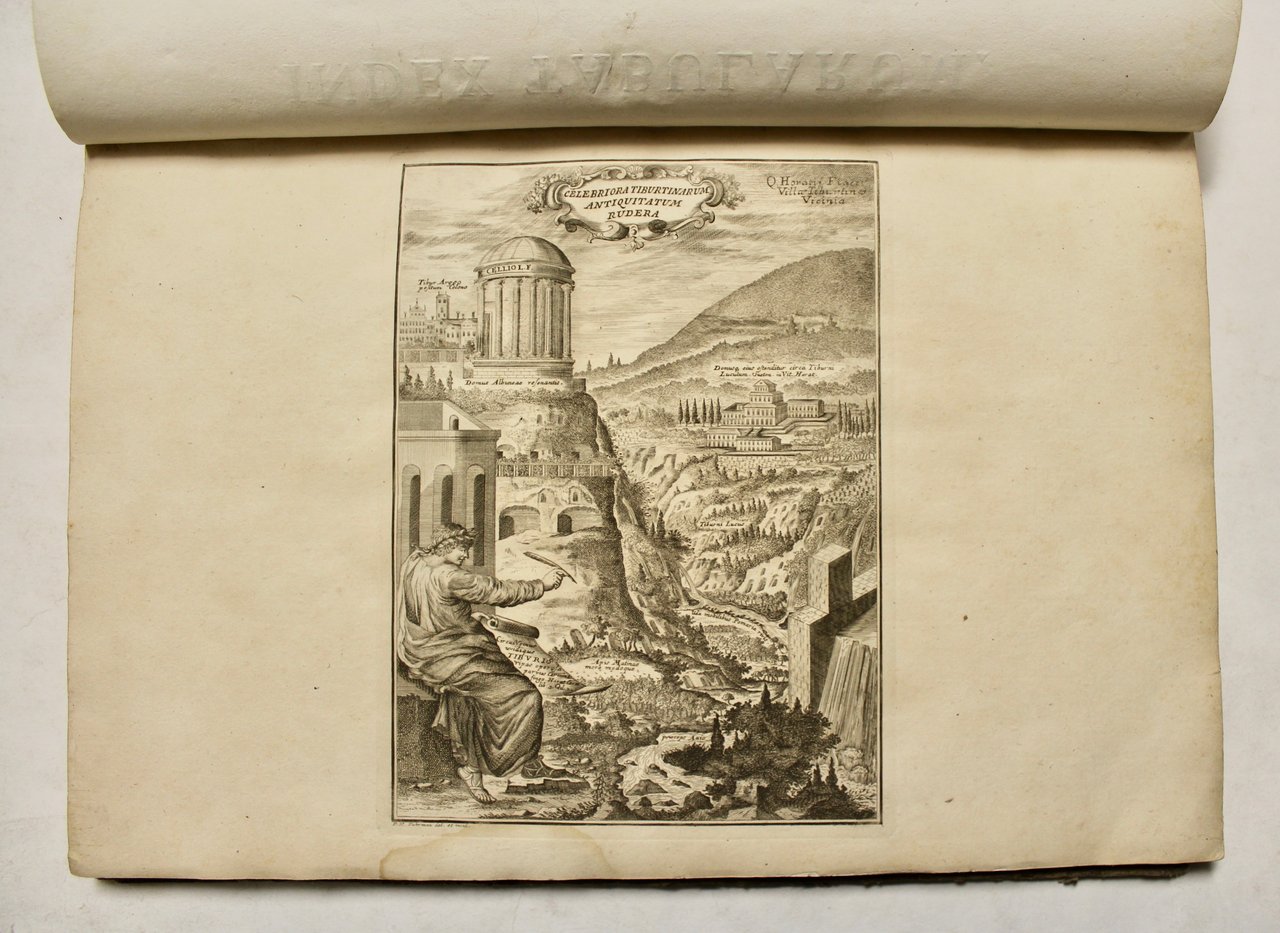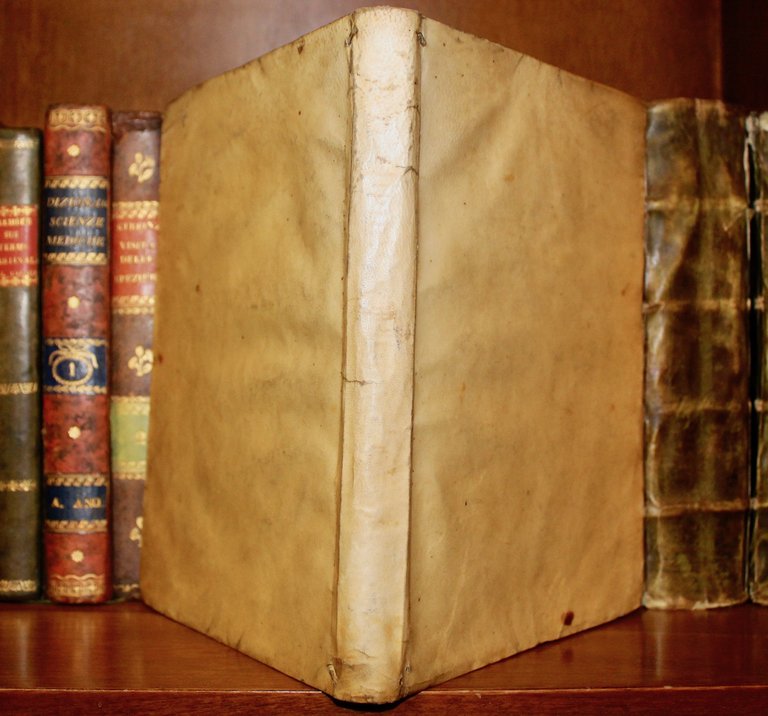In 4° (mm 225x160). Due parti in un volume, carte n.n 8, carte num. 80 (ma 84), carte n.n. 8.<BR>Marca editoriale a entrambi i frontespizi, raffinati capolettera, testatine e finalini incisi in legno, 50 rimarchevoli tavole silografiche nel testo a piena pagina di piante e semplici. Piena pergamena floscia coeva, titolo manoscritto al dorso. <BR>Prima edizione. Importante trattato sulla flora egiziana, di grande successo e ampia diffusione, celebre lavoro scientifico di Alpini, medico e botanico veneto (1553 - 1617), prefetto dell'orto botanico di Padova e titolare della cattedra di Ostensione dei semplici (l'odierna farmacologia). Il prevalente interesse scientifico del medico di Marostica fu sicuramente la botanica e colse l'occasione di studiarne i segreti nei tre anni trascorsi a seguito del console veneziano Giorgio Emo al Cairo, (essendo il suo medico personale), professore e direttore dell'Orto Botanico presso l'università di Padova.<BR>L'A. dedusse il concetto di differenza sessuale nelle piante, che in seguito fu adottato come fondamento dal sistema di classificazione scientifica di Linneo. Egli comprese che le palme da dattero femminili non portavano il frutto a meno che non ci fosse un mescolamento tra i rami maschili e femminili o, come generalmente avviene, a meno che la polverina prodotta dai fiori maschili non fosse cosparsa sui fiori femminili. (tav. Pag. 26). Nell'opera è contenuta la prima illustrazione europea della pianta del caffè (vedi Hünersdorff). Come riporta Alpini " vidi nel giardino di Halybei il turco un albero… da cui si ricavano questi semi, li molto comuni chiamati Ban o Bon; da questi gli arabi ed egiziani preparano un decotto che bevono al posto del vino, venduto nei bars come lo è il vino da noi e viene chiamato "Caova". Questi semi sono importati dalla penisola Araba… (la tav. a pag. 25 v). La seconda opera (prima edizione 1591) è uno dei più antichi trattati sulle piante balsamiche. Secondo Sprengel il balsamo qui principalmente trattato è la specie Amyris (una varietà di sandalo), si dice che il Bartolini l'abbia visto nel giardino di Alpini dove vegetò e fiorì per anni, questa meravigliosa pianta ha proprietà antisettiche e balsamiche, viene rappresentato nella tavola alla carta 78. <BR>Bell'esemplare, piccolo restauro alla terza carta non num. con l'indice, piccola mancanza al taglio inf. della pergamena al piatto anteriore, che per altro è in ottime condizioni; presenta minime ossidazioni marginali, lieve alone all'angolo inf. all'inizio del tomo ed alla fine un po' accentuato; piccolo camminamento di tarlo a cinque pagg. al margine sup. interno, lieve mancanza dell'ang. inf. di pag. 45. <BR>Edit 16, CNCE 1244. BM-STC Italian 20. Adams A 803. IA 103.853. Ibrahim-Hilmy I, 32. Gay 1678. Wellcome I, 233. Durling 179. Nissen 20. Pritzel 111. Mueller 5 (& plate I). Hünersdorff I, 29-32. Codice articolo 44797.<BR><BR>4to (mm 225x160); 2 parts in one volume. ff (4), 80 (but: 84), (8). With printer's device on both titlepages and 50 large woodcuts in text, large and clear, in the Mattioli style, many full-page. <BR>First edition of the first work on the plants of Egypt. Prospero Alpini (1553-1617) was a physician and botanist who graduated from Padua. In 1580 he became personal physician of the Venetian consult to Cairo and travelled to Egypt where he resided until 1583. Alpini was among the first of the italian physician-botanist of the sixteenth century to examine plants outside the context of their therapeutic uses. He helped to advance the frontiers of botanical science by taking advantage of knowledge gained through his travels. "De plantis Aegypti is his most important work. The pioneer study of Egyptian flora, it introduced exotic plants to the still-parochial European botanical circles…Fifty-seven plants and trees are described, and forty-nine are illustred. Alpini's medical training led him to approach the new flora in traditional manner of attemting to correlate these plants with the names and descriptions found in classical sources. When this proved impossible, he described the plant under its local name. The descriptions are based upon specimens that Alpini personally examined, either cultivated in gardens or growing wild. This in itself provided a much-needed corrective to the fables and vague reports associated with Eastern plants. Among the plants previously underscribed in aEuropean botanical text were the coffee bush (Coffea arabica L.), banana (Musa sp. ), and baobab (Adansonia digitataL.) …Alpini observed that the fertilization of the date palm was a sexual process, described yhe phototropic movements of the leaves of the tamarind, speculated that the tree cotton was the byssos of the ancients, and noted the edibility of plants unknown in Europe, such as bammia or okra" (Jerry Stannard in DSB). <BR>The second work, first published in 1591, is "an early special treatise on balsam plants. The present book started a rather extensive literature on the subject, which was discussed throughout the 17th century. Very nice crisp copy in contemporary vellum. Marginal waterstain to preliminary leaves as well as at the end more evident.<BR>Alpini writes: "I saw in the garden of Halybey the Turk a tree [.] which is the source of those seeds, very common there, which are called Ban or Bon; from them everyone, Egyptians and Arabs alike, prepare a decoction which they drink instead of wine and which is sold in public bars just as is wine here and they call it 'Caova'. These seeds are imported from the Arabian peninsula [.]" (f. 26r, transl.). The coffee plant is pictured on f. 25v, captioned "Bon". Edit 16, CNCE 1244. BM-STC Italian 20. Johnston 136; Adams A 803. IA 103.853. Ibrahim-Hilmy I, 32. Gay 1678. Wellcome I, 233. Durling 179. Nissen BBI 20. Pritzel 111. Mueller 5 (& plate I). Hünersdorff I, 29-32, "Today this work is best known for containing the first European illustration of the coffee plant".<BR>


Find out how to use
Find out how to use

